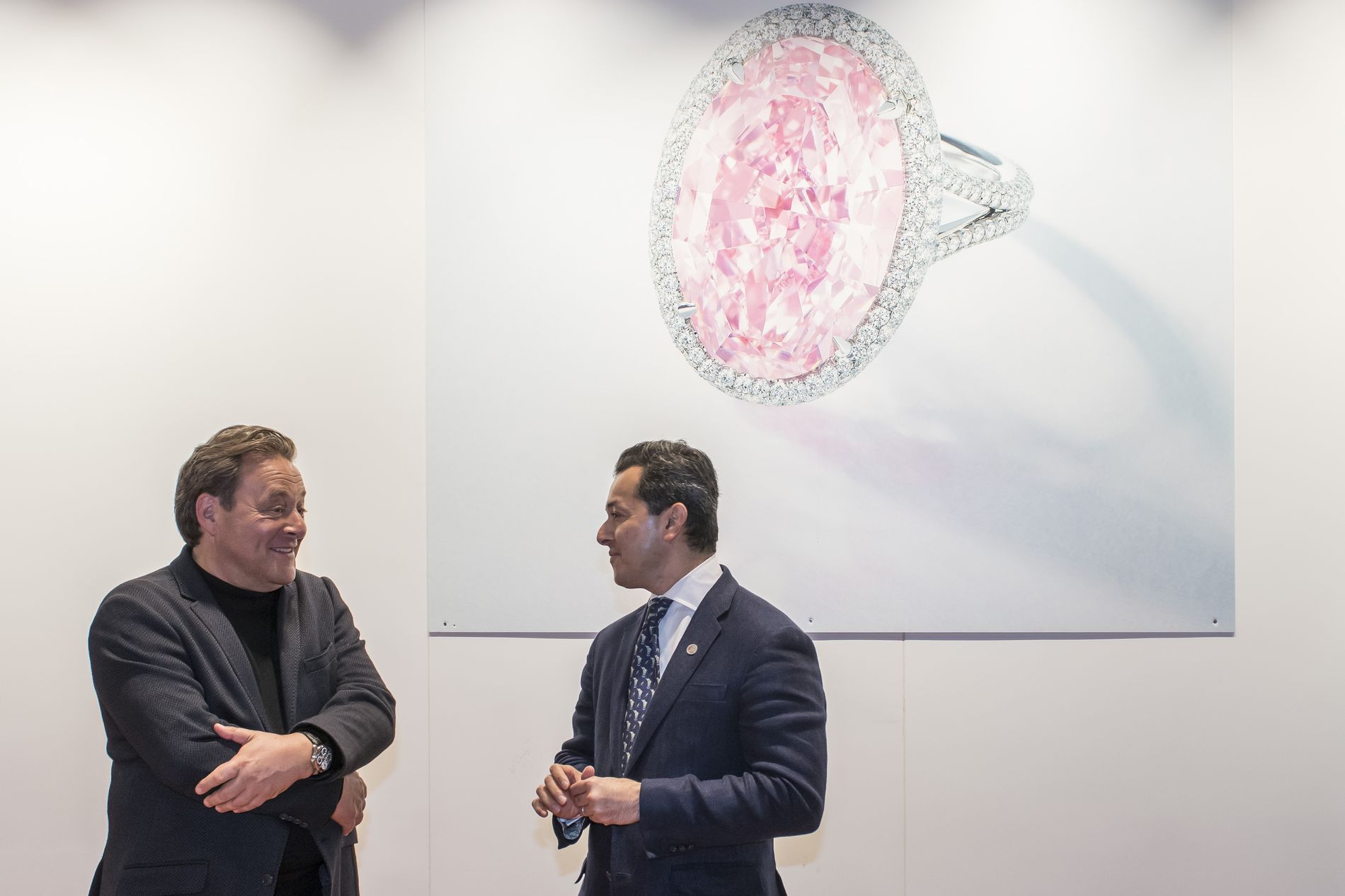We heard a rather interesting presentation by research scientist Dr. Bert Willems in the afternoon, about synthetic diamonds, and whether opportunities lie in these, or they pose a threat to the market by their sheer existence.
As opposed to diamond imitations, synthetic diamonds bear the same physical and chemical properties as real diamonds. However, they are manufactured either partially or completely under artificial circumstances. Irridation (the process by which an object is exposed to radiation) was a process commonly used in the 1950s for colouring colourless stones. Due to this irrevocable process there are many unnatural fancy coloured diamonds on the market. The other method was coating, which is not a permanent procedure. In the 1970s, the so-called HT and HPHT (High Pressure High Temperature Treatment) treatments appeared which were suitable for changing yellow toned diamonds into fancy coloured, or improving brownish diamonds into the much more valuable, almost colourless diamonds.
In 2001, the former Apollo Diamond company (Apollo Diamond were acquired by Scio Diamond Technology Corporation in 2011) launched the CVD (chemical vapour deposition) procedure whereby with the aid of great vacuum in a reactor it is possible to improve colour and purity, moreover it is suitable for making pink diamonds which are very rare in nature.
Technical advances have made it possible to artificially create diamonds using special pressure, microwaves, a carbon source and various gases – moreover with relative economic efficiency. The field of use is on the one hand industrial; however on the other hand it is the precious stone market.
In May 2012 the first CVD stones appeared on the market, causing headaches for the industry on the ways in which the synthetic diamonds can be distinguished from the natural ones. Due to the nature of the artificial production, the stones bear certain traits, for example they take up a characteristic flat or trapezzini shapes during the growth process, and these lines are visible even after being cut. The lack of certain typical natural centres in the stone is also a possible telltale sign.
Most colourless or almost colourless synthetic stones can be identified with the screening process (DiamondSure, D-Screen), while the DiamondView can analyze stones of any colour.
The Alpha Diamond Analyzer which operates on the principle of infrared spectroscopy is also suitable for the analysis of stones above 0,01 ct; it recognizes imitations, and diamonds treated with HPHT and CVD too.
It remains to be seen how the precious stone market and customers react to the appearance of CVD diamonds, however it lies in the interest of all experts to be equipped with the right know-how and equipment for identifying stones.
If you are really interested, learn more about the topic here.




